
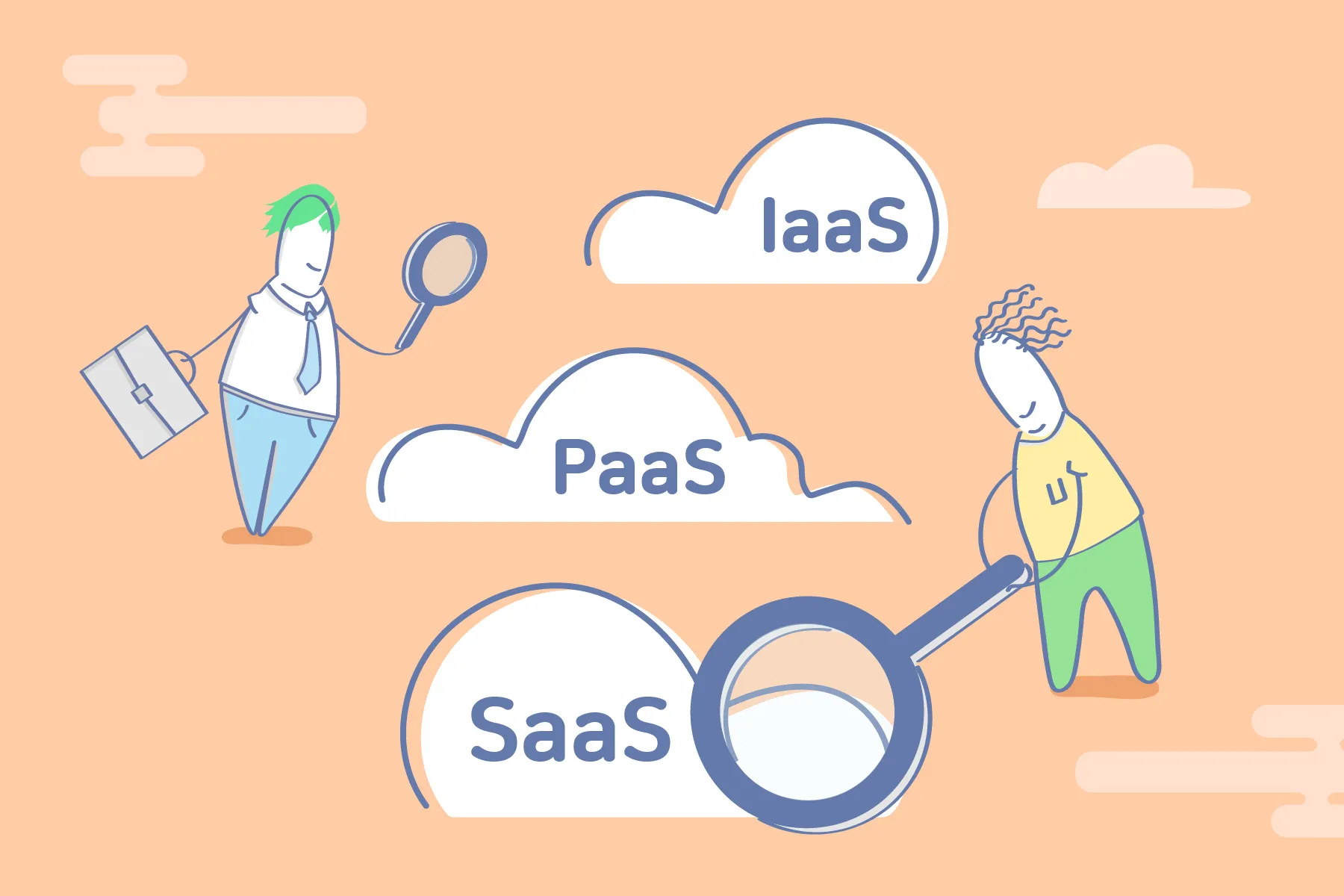
Cloud computing refers to the provisioning of virtualized IT resources as services over the internet. Within cloud computing, the entities virtualized and provided as services include servers, platforms, and software.
With the popularization of AWS and Azure, cloud computing has often been perceived solely as the virtualization concept of infrastructure. However, the cloud encompasses a considerably broader concept, not limited to infrastructure alone but encompassing online domains that span platforms and software. Hence, it is beneficial to comprehend the cloud by categorizing and understanding its various aspects and characteristics within specific fields.
IaaS, PaaS, SaaS Concepts
The development team is also highly interested in IT service operations. They are well aware that efficient service operations enhance the visibility of developed features. Therefore, we actively contemplate methods for quickly identifying and analyzing issues within the service. To achieve this, we employ the following approaches
Here are four methods that development teams can adopt to ensure the stable operation of IT services.
- Infrastructure as a Service (IaaS) provides infrastructure as a service, virtualizing the physical resources provided to developers.
- Platform as a Service (PaaS) offers a platform as a service, virtualizing the platform provided to developers.
- Software as a Service (SaaS) delivers software as a service, virtualizing the software provided to customers.
Differences of SaaS, PaaS, IaaS

- IaaS:Infrastructure as a Service - Cloud infrastructure services provide virtualized, highly scalable, and automated computing resources.
- PaaS: Platform as a Service - Cloud platform services provide a platform for developing and running applications.
- SaaS: Soft as a Service - Cloud computing service model that provides software applications over the internet. SaaS applications are hosted and managed by a third-party, and accessed by users through a web browser. This means that users do not need to install any software on their own computers.
What It Offers
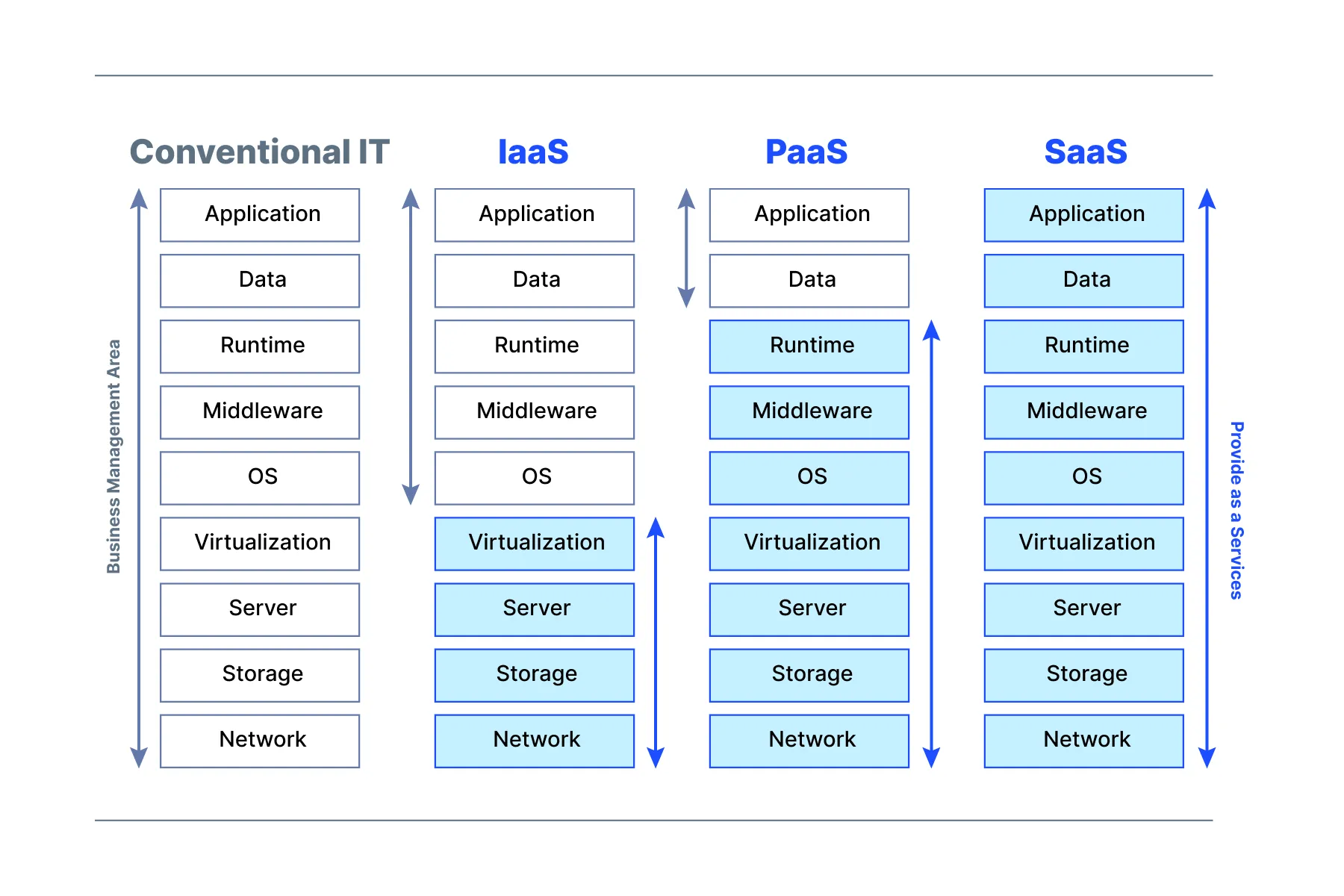
The cloud encompasses a vast domain covering a wide array of online services. Cloud services are categorized into IaaS, PaaS, and SaaS based on the scope they offer. Understanding the specific offerings of each cloud service type can be helpful for understanding cloud as a whole.
(1) IaaS: Provides Physical Resources
IaaS provides and manages virtualized servers, networks, operating systems, and storage to customers. IaaS delivers virtualized physical assets through a UI dashboard or API. Customers of IaaS have access to servers and storage, essentially receiving resources through a virtual data center in the cloud. By fully virtualizing physical assets traditionally obtained from existing data centers, IaaS allows for much quicker adaptation such as modifying server specifications, compared to conventional methods.
IaaS provider manages servers, hard drives, networking, virtualization, and storage, while customers are responsible for managing resources such as operating systems, middleware, applications, and data.
(2) PaaS: Provides a Platform to Help Software Development
PaaS provides and manages a platform for software development, such as operating systems, middleware, and runtime to customers. This virtualized platform is provided through the web, and developers can focus on software development without concerns about managing operating systems, software updates, storage, or infrastructure.
By leveraging specific software components within PaaS, enterprises can design and create applications embedded in the PaaS. These applications or middleware exhibit high scalability and availability when adopting specific cloud attributes.
IaaS provider manages servers, hard drives, networking, virtualization, and storage, while customers are responsible for managing resources such as operating systems, middleware, applications, and data.
(3) SaaS: Provides Software Used By Customers
SaaS provides and manages software and data on behalf of customers. Unlike the conventional software delivery models such as packaged or on-premise solutions, SaaS does not require users to download and install applications on individual computers. SaaS providers manage all underlying technical issues, including data, middleware, servers, and storage, allowing customers to streamline maintenance and resources, thereby focusing on their business.
The Advantages and Disadvantages of Cloud
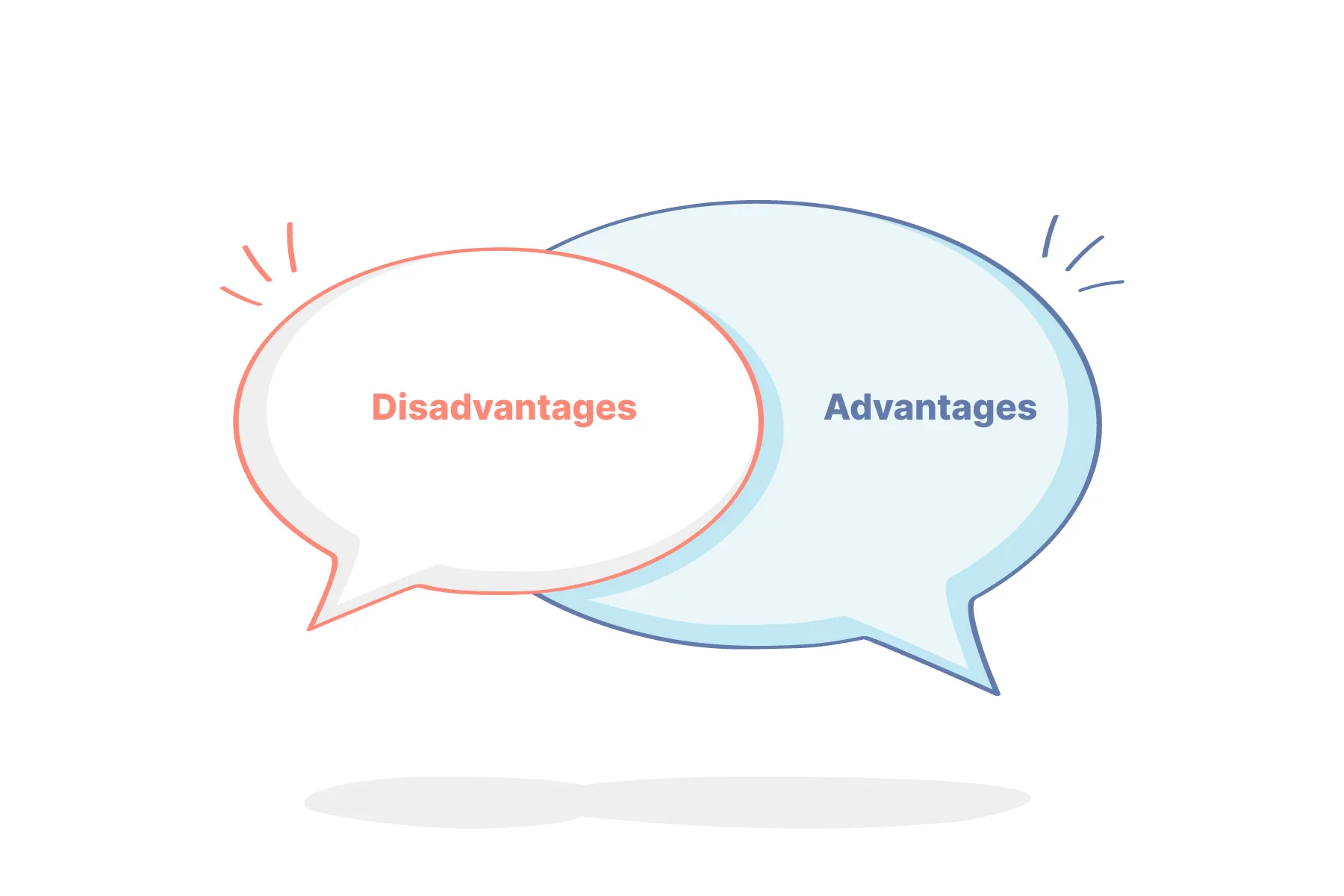
The advantages of using cloud infrastructure services differ from those of using cloud software services. Hence, here are descriptions outlining the advantages and disadvantages of the three cloud services.
Advantages of IaaS
Cost
There are no fixed expenses as physical resources are used in the form of servers.
Speed
Physical resources can be consumed immediately.
Management
- Physical resource management can be replaced with logical domains.
- Automated deployment of physical resources is feasible.
- Stable operation of physical resources can be entrusted to the vendor.
- Flexibility in scaling physical resources up or down is unrestricted.
Advantages of PaaS
Cost
Using only the required platforms in a consumption-based model can alleviate cost burdens.
Speed
Swift acquisition of development and deployment processes is achievable.
Management
- Simplified software maintenance./p>
- Built on virtualization technology, enabling easy scaling of resources based on business fluctuations.
- Offers a range of services supporting application development, testing, and deployment./p>
- Allows numerous users to access the same development applications.
Disadvantages of PaaS
It may be constrained by a specific platform service.
Advantages of SaaS
Cost
Reduced cost burden as software is used in a consumption-based model.
Speed
Can be used immediately.
Management
- No need for physical resources to install the software./p>
- Accessible anytime, anywhere.
Disadvantages of SaaS
Customization is difficult
When to implement cloud
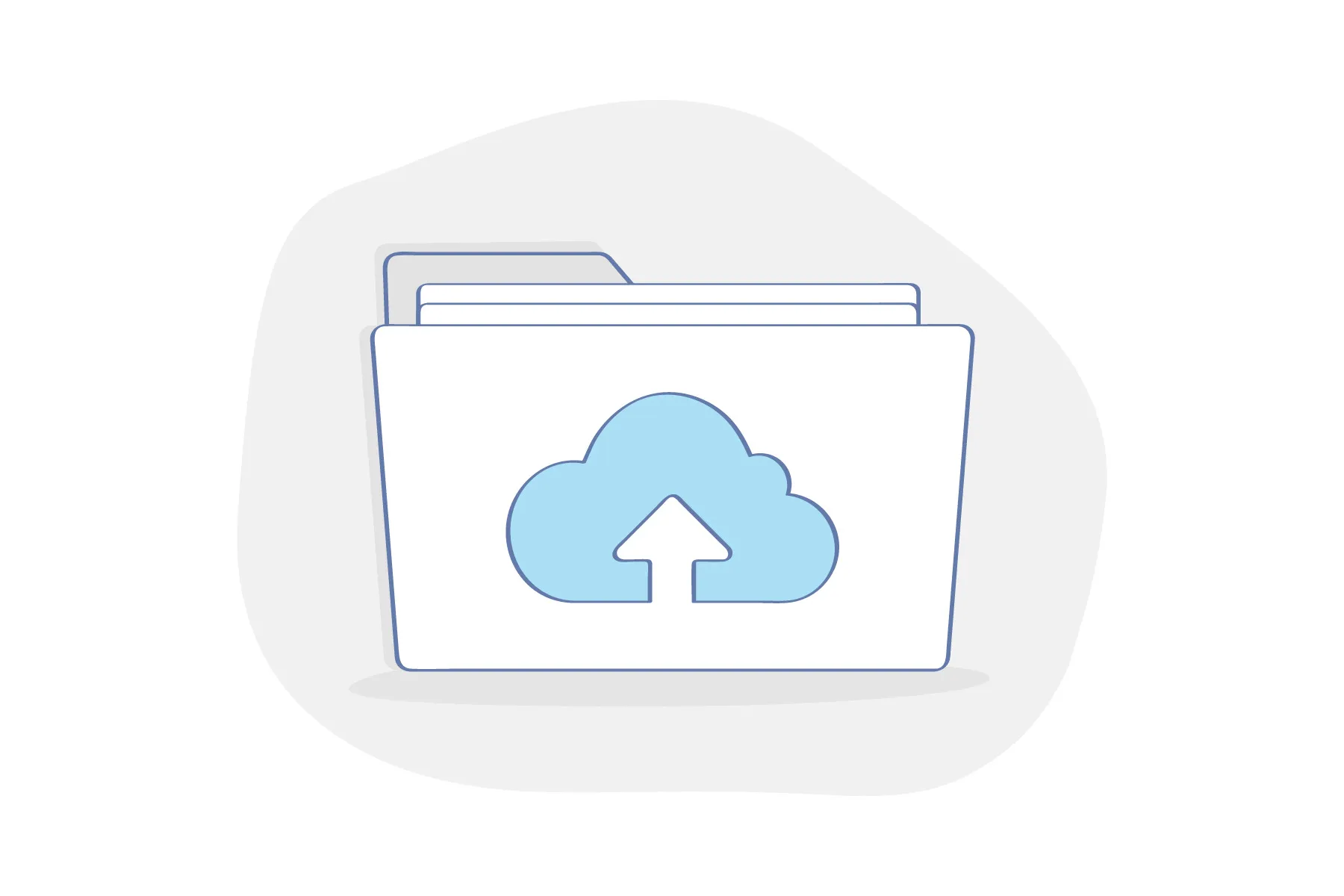
(1) IaaS: If you want to make quick changes
For startups or small businesses, IaaS presents an excellent option, eliminating the need to invest time and money in installing hardware or software. IaaS can be beneficial for large-scale organizations that want to have complete control over applications and infrastructure, but only if they are willing to purchase for what is actually consumed or needed. For rapidly growing businesses, IaaS can be a great choice as it avoids the need to commit to specific hardware or software, allowing flexibility as requirements evolve. Moreover, its considerable flexibility in scaling up or down can be helpful when unsure about the requirements for new applications.
(2) PaaS: If you need to speed up development
There are many cases where utilizing PaaS can be beneficial or necessary. When multiple developers are working on the same development project or involving various vendors, PaaS can offer excellent speed and flexibility to the overall process. It proves useful when create customized applications. Moreover, this cloud service can significantly reduce costs and simplify several challenges arising from rapid app development or deployment.
(3) SaaS: If you want to focus on your business
SaaS proves to be an excellent option for all businesses, as long as the data is not sensitive. Additionally, adopting SaaS is much more advantageous for short-term projects requiring collaboration. Typically, on-premise solutions do not support mobile access. Therefore, opting for SaaS even when mobile access is necessary can save both time and costs.
Reference: What are the preparations for migrating to the cloud?
Cloud service utilization cases
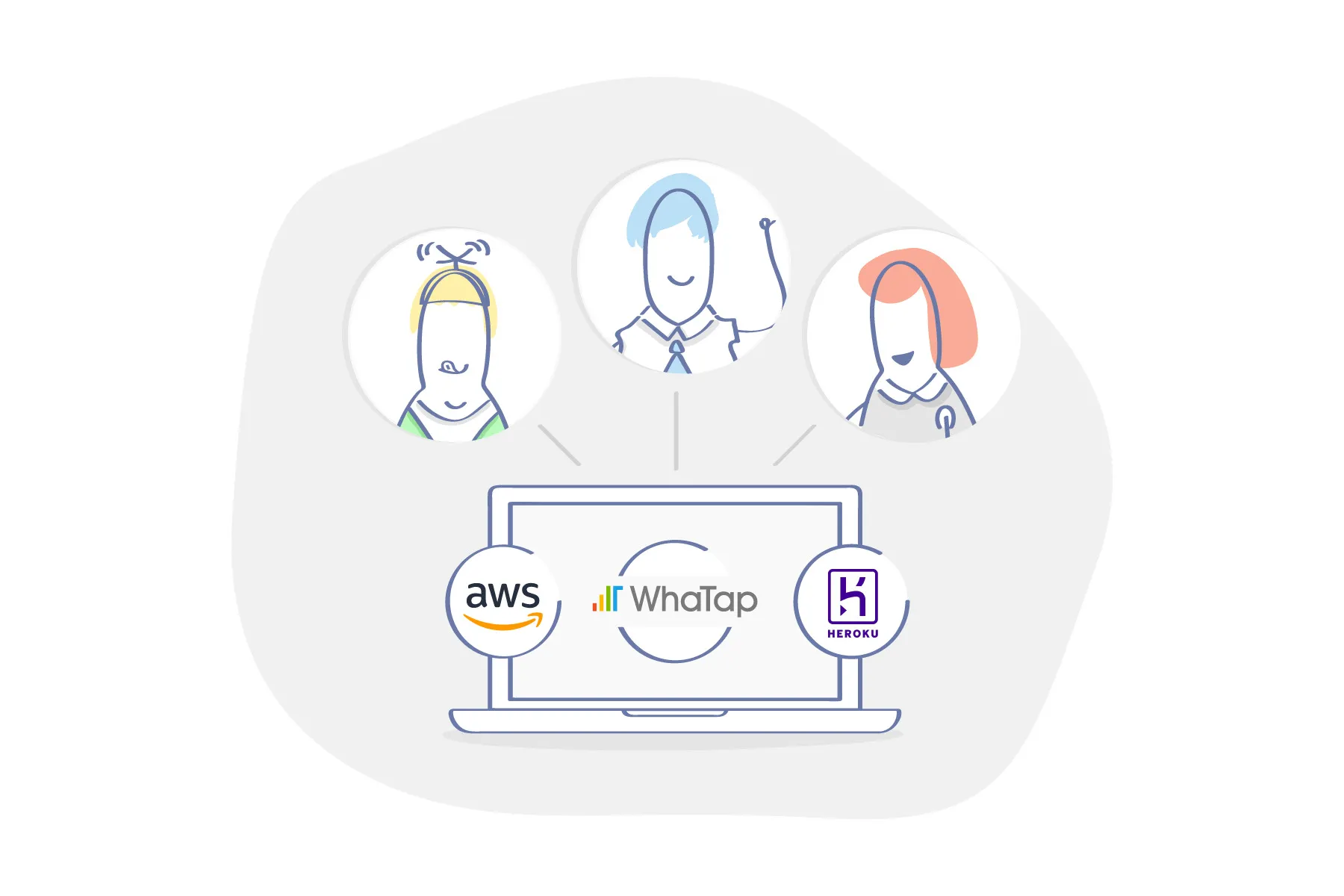
(1) IaaS
Amazon Web Service(AWS), Microsoft Azure, DigitalOcean, Google Compute Engine(GCE)
(2) PaaS
AWS Elastic Beanstalk, Windows Azure, Heroku, Google App Engine
(3) SaaS
WhaTap, Google Apps, Dropbox, Salesforce
Conclusion
Many corporate executives are contemplating adopting cloud services, while many startups are actively developing cloud-based services. If a company needs to adopt the cloud, it is important to understand which type—whether IaaS, PaaS, or SaaS—should be introduced. And if your service is cloud-based, it is essential to explain easily to customers why the adoption is necessary. WhaTap Labs is one of the few companies in Korea that provides SaaS monitoring services. Launched in January 2015, the service has evolved for over four years. We hope to see more cloud services emerging in Korea in the future.
.svg)
.svg)






